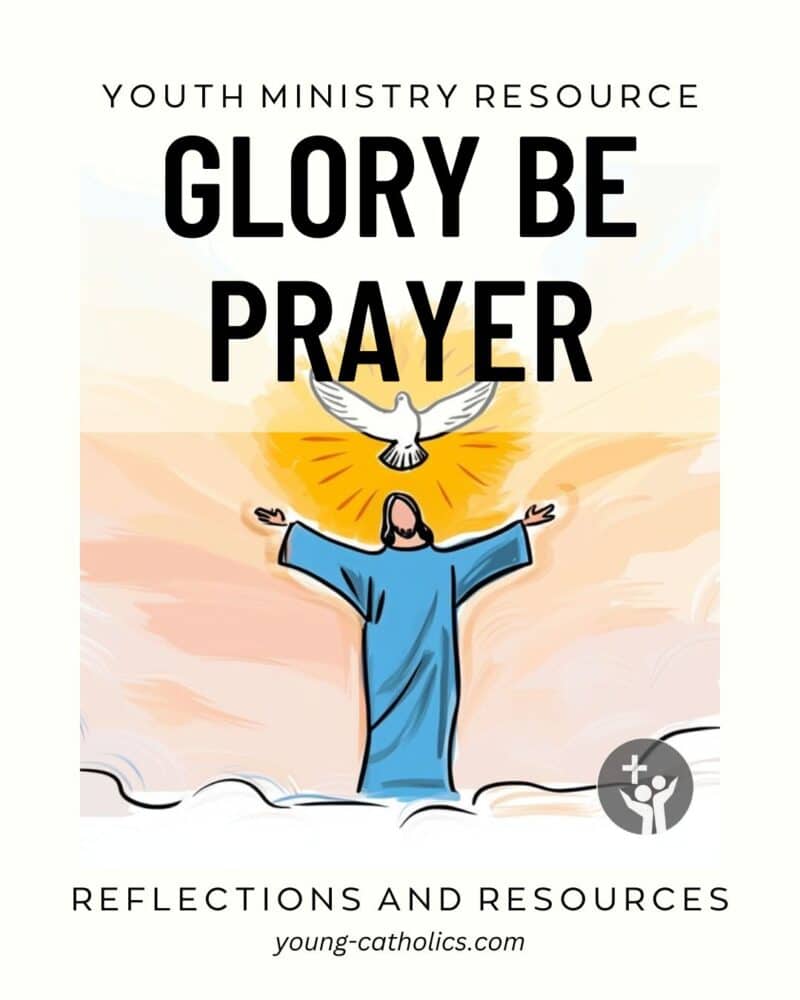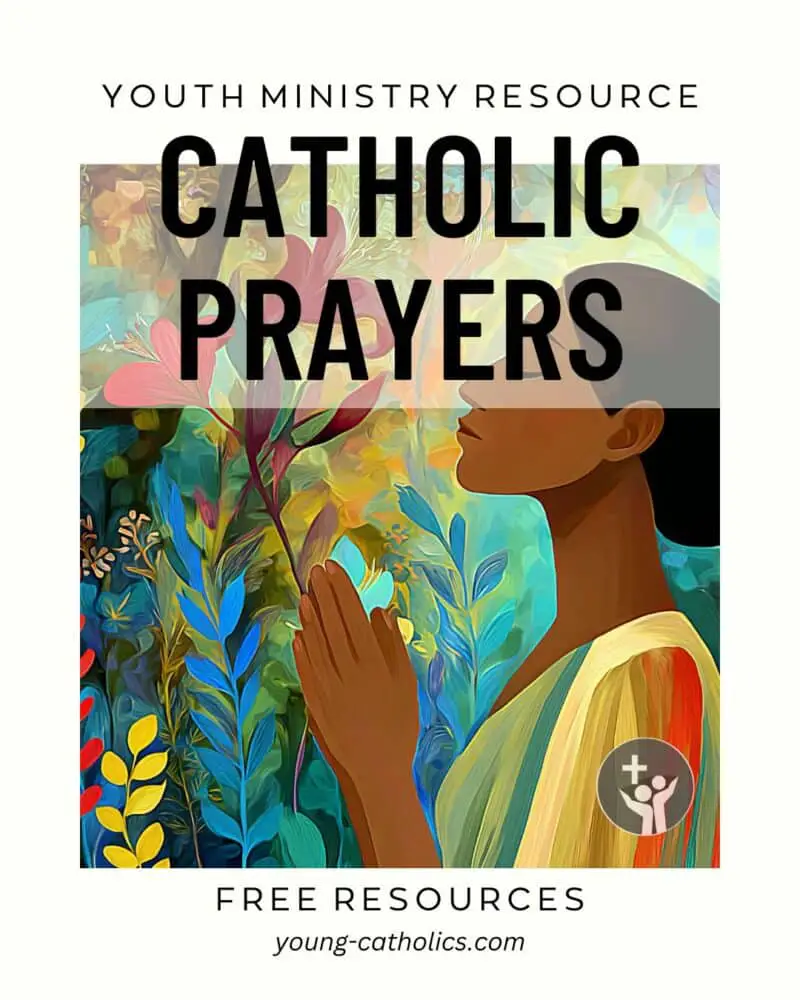The Glory Be Prayer

The Glory Be is a short and simple prayer. Catholics use it often in both private and public prayer. It gives praise to God the Father, Son, and Holy Spirit. This prayer is a way to show love and honor to the Holy Trinity.
You will hear this prayer during the Rosary, in the Liturgy of the Hours, and at many other times in Catholic life. Many people use it at the beginning or end of prayer. It reminds us who God is and helps us focus our minds and hearts on Him.
The Glory Be is a reminder that God is with us in every moment. It tells us that God was there at the beginning, is with us now, and will always be. These words help bring peace and trust, especially during hard times. The prayer is short, but it says a lot about our faith.
This prayer also connects us to the whole Church. Catholics around the world pray these same words. When we say the Glory Be, we join in the prayer of the Church across time and space. It helps us stay close to God and to each other.
Old Words That Still Speak Today
The Glory Be is one of the oldest prayers in the Church. Christians have been praying it for many centuries. It is sometimes called the “Doxology,” which means a short prayer that gives glory to God. Early Christians used this type of prayer when they gathered to worship, especially when reading from Scripture or singing psalms.
The words of the Glory Be are simple and easy to remember. The prayer says:
“Glory be to the Father, and to the Son, and to the Holy Spirit,
as it was in the beginning, is now, and ever shall be,
world without end. Amen.”
This format has stayed the same for a long time. It praises the Holy Trinity and reminds us that God never changes. He was, He is, and He will always be.
You can find this prayer in many Catholic prayers and devotions. It is used after each decade of the Rosary. It is also part of the Liturgy of the Hours, which is prayed by priests, deacons, religious, and many laypeople around the world.
Pointing to God in Every Time and Place
The Glory Be helps young people remember who God is. It connects to many Bible themes and lessons in the Catechism. It teaches that God is always with us—past, present, and future. It reminds us that God is one, but also three persons: Father, Son, and Holy Spirit.
This prayer fits well with teaching about the Holy Trinity. It also ties into lessons about praise, trust, and the eternal nature of God. In youth ministry, it gives young people a way to respond in prayer without needing long explanations. It’s short, but it teaches key truths about our faith.
The Catechism says, “The mystery of the Most Holy Trinity is the central mystery of Christian faith and life” (CCC 234). This prayer gives glory to the Trinity and helps young people grow in love for God.
By using the Glory Be in youth groups, lessons, and prayer times, we help teens learn to praise God and stay rooted in His presence. It’s a good habit that stays with them for life.
The Glory Be Prayer
Glory be to the Father,
and to the Son,
and to the Holy Spirit,
as it was in the beginning,
is now, and ever shall be,
world without end. Amen.
More Resources

More Catholic Prayers
The Glory Be Prayer is just one of many prayers that help us grow in faith. If you are looking for more prayers to use with youth, families, or in personal prayer time, take a look at our Catholic Prayers page.
You’ll find a wide variety of simple and meaningful prayers there. These can help you build good prayer habits and deepen your trust in God. Visit the Catholic Prayers page to explore more.
Social Media Graphics and Bulletin Artwork
If you would like an image to be made available as a specific product (card, poster, mug, etc.) or as an extra high resolution image for personal use just post a comment about what you want and we will create a link to our online store for you.
Praise to the Holy Trinity

nhance your parish resources with this radiant image that reflects the Glory Be prayer. Perfect for bulletins, newsletters, or catechetical materials, it visually proclaims the eternal praise of the Father, Son, and Holy Spirit. Use it to inspire reflection on God’s unending presence and love.
Download it today to bring beauty and devotion to your prayer and teaching materials.
Paid subscribers may download a large copy this digital artwork without watermarks, suitable for use in bulletins, social media, newsletters, etc., free of charge by clicking here. You must be logged in as a paid subscriber to access the file.
Only current paid subscribers have the rights to use the artwork.
Questions and Answers about the Glory Be Prayer
What is the Glory Be Prayer?
The Glory Be Prayer is a short prayer that gives praise to the Holy Trinity—Father, Son, and Holy Spirit. It reminds us that God has always existed and always will.
When do Catholics say the Glory Be Prayer?
Catholics say the Glory Be Prayer at the end of each decade of the Rosary. It is also part of the Liturgy of the Hours and often used in other prayers.
Why do we say “world without end” in the Glory Be Prayer?
This line means that God’s love and power will last forever. It reminds us that God’s kingdom has no end.
Where does the Glory Be Prayer come from?
The Glory Be Prayer comes from early Christian worship. It has been passed down through the Church for many centuries.
Can children learn the Glory Be Prayer?
Yes. The Glory Be Prayer is short and easy for children to learn. It is a good prayer to teach early in faith formation.
Is the Glory Be Prayer found in the Bible?
The exact words are not in the Bible, but the prayer is based on Bible truths. It reflects the praise given to God in Scripture, especially in the Psalms and New Testament.
Why is the Glory Be Prayer important in youth ministry?
The Glory Be Prayer helps young people learn to praise God. It is simple, easy to remember, and teaches key parts of our faith. It helps teens grow closer to God through regular prayer.
Giving Glory in Every Moment
The Glory Be Prayer is a short and simple prayer used by Catholics all over the world. It gives praise to the Holy Trinity—Father, Son, and Holy Spirit. It is often said at the end of a Rosary decade, during the Liturgy of the Hours, or in personal prayer.
This prayer reminds us that God has always been, is now, and always will be. It helps us focus on the eternal nature of God. The words are easy to remember, making it a great prayer for children and adults.
The Glory Be Prayer also teaches us about the Trinity. It shows that the Father, Son, and Holy Spirit are one God. This helps us understand one of the most important parts of our faith.
Using this prayer in youth ministry or at home helps build strong habits of prayer. It connects us to the Church and reminds us of God’s presence in every part of life.
Your Turn
Have you used the Glory Be Prayer in your home, classroom, or ministry? Has it helped you grow in your faith or bring calm to a busy day?
We’d love to hear from you. Share your thoughts or how you use this prayer in the comment section below. Your ideas may help others grow in their own prayer life.



Leave a Reply